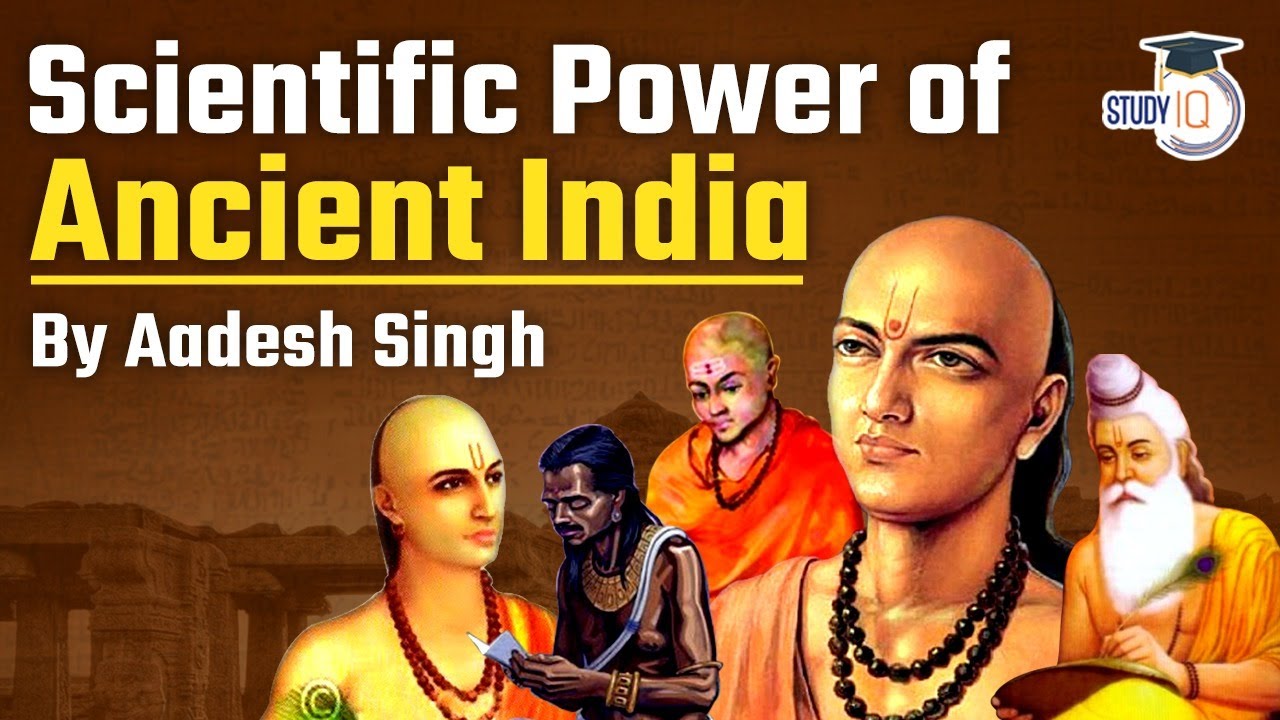IKS Lecture Ancient Mathematics 2
Summary
TLDRThis lecture provides an insightful overview of ancient Indian contributions to mathematics, focusing on legendary figures such as Brahmagupta, Bhaskaracharya, and Madhava of Sangram. Brahmagupta's pioneering work in algebra, geometry, and the concept of gravity is discussed, alongside Bhaskaracharya's contributions to arithmetic, algebra, and astronomy. Madhava’s groundbreaking work in infinite series and calculus, particularly in trigonometry, is explored in depth. The lecture highlights their influence on global mathematical development, showcasing India’s rich mathematical heritage and its impact on the modern world.
Takeaways
- 😀 Brahmagupta was the first to describe gravity as an attractive force and used the term 'gurakar' in Sanskrit (628 CE).
- 😀 Brahmagupta made significant contributions to algebra, including providing solutions to linear and quadratic equations.
- 😀 Brahmagupta's *Brahmasphutasiddhanta* is a major work in which he discussed arithmetic operations involving zero and negative numbers.
- 😀 Bhaskaracharya (Bhaskara II) worked on arithmetic, algebra, and trigonometry in his famous work *Lilavati*.
- 😀 Bhaskara II's contributions include solving indeterminate equations and developing divisibility rules.
- 😀 Bhaskara II also made advancements in astronomy, particularly in calculating planetary motion and understanding eclipses.
- 😀 Varahamihira was an influential astronomer who contributed to understanding the movement of planets and the theory of eclipses in ancient India.
- 😀 Sarasvat contributed to the understanding of zero, highlighting its properties in arithmetic operations and developing methods to solve quadratic equations.
- 😀 Madhava of Sangrama is considered the founder of the Kerala School of Astronomy and Mathematics, with contributions to infinite series and calculus.
- 😀 Madhava developed infinite series expansions for trigonometric functions and accurately computed values of pi to several decimal places.
- 😀 Ancient Indian mathematicians like Brahmagupta, Bhaskara II, and Madhava laid the foundation for many modern mathematical concepts in algebra, geometry, and calculus.
Q & A
Who was Brahmagupta and what were his main contributions to mathematics?
-Brahmagupta was an Indian mathematician and astronomer who lived in the 7th century CE. His major contributions include the early description of gravity as an attractive force, the introduction of rules for arithmetic operations involving zero and negative numbers, and the formulation of solutions for linear and quadratic equations. He is also credited with developing a formula for cyclic quadrilaterals and working on geometric problems like Pythagorean triplets.
How did Brahmagupta describe gravity?
-Brahmagupta described gravity as an attractive force, using the term *gurakar* in Sanskrit. This was one of his significant contributions to early physics, which was far ahead of his time.
What is the significance of Brahmagupta's *Brahmasphutasiddhanta*?
-The *Brahmasphutasiddhanta*, written by Brahmagupta in 628 CE, is considered one of his major works. It provides a revised version of the astronomical theories of the Brahma Paka School and contains important contributions to arithmetic, algebra, and geometry, including the introduction of operations with zero and negative numbers.
What were Bhaskaracharya's major contributions to mathematics?
-Bhaskaracharya, also known as Bhaskara I, contributed to arithmetic, algebra, geometry, and trigonometry. His notable works include *Lilavati* and *Bijaganita*, where he developed methods for solving indeterminate equations, worked on the properties of zero, and introduced rules for operations with negative numbers. He also worked on estimating Pi and addressed problems involving simple and compound interest.
What is the *Kutaka* method introduced by Bhaskaracharya?
-The *Kutaka* method, introduced by Bhaskaracharya, is a technique used for solving indeterminate equations, particularly Pell’s equation, which was a significant contribution to algebra.
What were Varahamihira's contributions to astronomy and mathematics?
-Varahamihira was a pioneering Indian astronomer and mathematician. His key contributions include his work on the motion of planets and stars, celestial phenomena like eclipses, and his classifications of planetary positions. He is most famous for his work *Panchasiddhantika*, which synthesized various astronomical theories. His other works include *Brihat Samhita* and *Brihat Jataka*, where he made significant strides in understanding celestial bodies.
What is Sarada known for in the context of Indian mathematics?
-Sarada, a mathematician from the 9th century, is known for his work on arithmetic, fractions, and quadratic equations. He is credited with developing the 'completing the square' method for solving quadratic equations, and he made important contributions to the manipulation and properties of zero and negative numbers.
What is the significance of Madhava of Sangrama's work?
-Madhava of Sangrama, the founder of the Kerala School of Mathematics, made groundbreaking contributions to calculus, trigonometry, and infinite series. He developed power series expansions for trigonometric functions like sine, cosine, and tangent, and made significant advancements in the calculation of pi, achieving accuracy up to 17 decimal places.
How did Madhava contribute to the calculation of Pi?
-Madhava contributed to the calculation of Pi by developing infinite series for trigonometric functions and using them to approximate Pi. His methods were so accurate that they allowed the value of Pi to be computed up to 17 decimal places, which was unprecedented at the time.
What is the 'Yukti Bhasa' and why is it important?
-The *Yukti Bhasa* is a work by Madhava that contains the derivation and proof of power series for trigonometric functions like inverse tangent. It is significant because it marks a crucial step in the development of infinite series and calculus, influencing later mathematicians in both India and the West.
Outlines

هذا القسم متوفر فقط للمشتركين. يرجى الترقية للوصول إلى هذه الميزة.
قم بالترقية الآنMindmap

هذا القسم متوفر فقط للمشتركين. يرجى الترقية للوصول إلى هذه الميزة.
قم بالترقية الآنKeywords

هذا القسم متوفر فقط للمشتركين. يرجى الترقية للوصول إلى هذه الميزة.
قم بالترقية الآنHighlights

هذا القسم متوفر فقط للمشتركين. يرجى الترقية للوصول إلى هذه الميزة.
قم بالترقية الآنTranscripts

هذا القسم متوفر فقط للمشتركين. يرجى الترقية للوصول إلى هذه الميزة.
قم بالترقية الآنتصفح المزيد من مقاطع الفيديو ذات الصلة

Unit-3 Mathematics in Ancient India

Ancient India's Scientific Achievements & Contribution in Mathematics, Astronomy, Science & Medicine

IKS Lecture Ancient Mathematics 1

History of Calculus - Animated

MATERI PU1: AWAL PSIKOLOGI SEBAGAI ILMU TERSENDIRI

Kurikulum Merdeka Rangkuman PAI Kelas 8 Bab 10 Ilmuwan Muslim Bani Abbasiyah
5.0 / 5 (0 votes)
